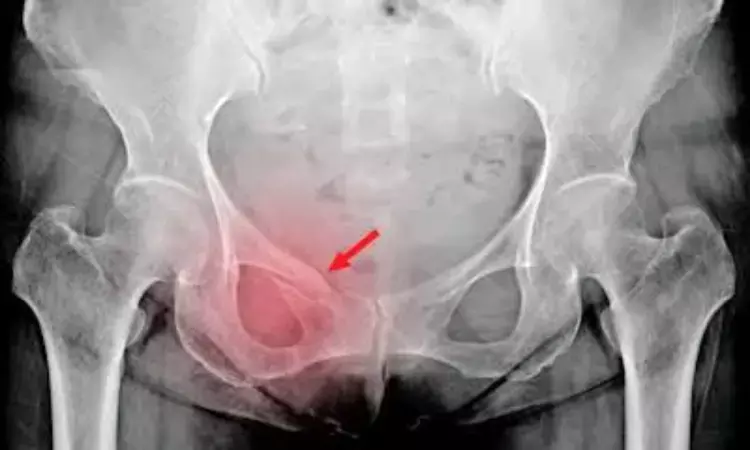- Home
- Medical news & Guidelines
- Anesthesiology
- Cardiology and CTVS
- Critical Care
- Dentistry
- Dermatology
- Diabetes and Endocrinology
- ENT
- Gastroenterology
- Medicine
- Nephrology
- Neurology
- Obstretics-Gynaecology
- Oncology
- Ophthalmology
- Orthopaedics
- Pediatrics-Neonatology
- Psychiatry
- Pulmonology
- Radiology
- Surgery
- Urology
- Laboratory Medicine
- Diet
- Nursing
- Paramedical
- Physiotherapy
- Health news
- Fact Check
- Bone Health Fact Check
- Brain Health Fact Check
- Cancer Related Fact Check
- Child Care Fact Check
- Dental and oral health fact check
- Diabetes and metabolic health fact check
- Diet and Nutrition Fact Check
- Eye and ENT Care Fact Check
- Fitness fact check
- Gut health fact check
- Heart health fact check
- Kidney health fact check
- Medical education fact check
- Men's health fact check
- Respiratory fact check
- Skin and hair care fact check
- Vaccine and Immunization fact check
- Women's health fact check
- AYUSH
- State News
- Andaman and Nicobar Islands
- Andhra Pradesh
- Arunachal Pradesh
- Assam
- Bihar
- Chandigarh
- Chattisgarh
- Dadra and Nagar Haveli
- Daman and Diu
- Delhi
- Goa
- Gujarat
- Haryana
- Himachal Pradesh
- Jammu & Kashmir
- Jharkhand
- Karnataka
- Kerala
- Ladakh
- Lakshadweep
- Madhya Pradesh
- Maharashtra
- Manipur
- Meghalaya
- Mizoram
- Nagaland
- Odisha
- Puducherry
- Punjab
- Rajasthan
- Sikkim
- Tamil Nadu
- Telangana
- Tripura
- Uttar Pradesh
- Uttrakhand
- West Bengal
- Medical Education
- Industry
Artificial intelligence can accurately detect hip fractures on pelvic x-rays

Singapore: A research paper, published in iScience, has decribed the development of a deep learning model for predicting hip fractures on pelvic radiographs (Xrays), even with the presence of metallic implants.
Yet Yen Yan of Changi General Hospital and colleagues at the Duke-NUS Medical School, Singapore, and colleagues developed the AI (artificial intelligence) algorithm using more than fortythousand pelvic radiographs from a single institution. The model demonstrated high specificity and sensitivity when applied to a test set of emergency department (ED) radiographs.
This study approximates the realworld application of a deep learning fracture detection model by including radiographs with suboptimal image quality, other nonhip fractures and meta llic implants, which were excluded from prior published work. The research team also explored the effect of ethnicity on model performance, and the accuracy of visualization algorithm for fracture localization.
"The high sensitivity and negative predictive value of our model highlights the potential for [AI] solutions like ours to be particularly useful in urgent or ED settings, where emphasis is on avoiding missed diagnoses," the researchers wrote.
There has been an increase in the global incidence of hip fractures due to an aging population and is estimated to reach 6.3 million by 2050. Older adults are commonly affected by these fractures, with misinterpretations of pelvic radiographs contributing to delayed surgical repair and missed diagnoses.
The authors wrote, "thus, hip fractures represent a promising target for AI algorithms. Considering this, they collected 40,203 pelvic x-rays from their hospital's PACS. Out of these 21,400 were performed in an ambulatory or inpatient setting, and 18,803 were performed in the ED.
Firstly, the images were used to train and validate a DenseNet-121 CNN (convolutional neural network), which was selected based on its comparetively faster training time and fewer parameters. The presence of a hip fracture was determined by two expert radiologists and defined as any fracture involving the proximal femora, with ground-truth labels (hip fracture present or absent).
Of the 18,803 pelvic x-rays performed in the ED, 20% were randomly selected to form a holdout test set for subsequent model's evaluation. The researchers noted, the holdout set contained 463 images that were positive for hip fracture. Orthopedic implants in either the proximal femur or the bony pelvis were also present in a significant proportion of the images.
The study led to the following findings:
· For identifying images correctly, the CNN achieved an area under the curve of the receiver operating characteristic curve (AUROC) of 0.990 and an area under the precision-recall (PR) curve (AUPRC) of 0.948, according to the results.
· The model predicted 27 false-negatives, 121 false-positives, and it detected seven of seven nondisplaced fractures (sensitivity 100%) and 429 of 456 displaced fractures (sensitivity 94.1%).
· A subgroup analysis of the model's performance was performed based on images with orthopedic implants in the holdout test set. There were 389 x-rays with at least one implant, of which 8.2% were positive for hip fracture.
"Our study demonstrates the ability for a [deep-learning] CNN solution for the identification of hip fractures on pelvic radiographs," the team wrote.
"The favorable performance achieved by this model demonstrates that it may be feasible for institutions to develop their own deep learning algorithms for computer aided diagnoses, based on patterns of local prevalence and local imaging parameters," they concluded.
Reference:
Gao, Y., Teck Soh, N.Y., Liu, N., Lim, G., Ting, D., Cheng, L., Wong, K.M., Liew, C., Oh, H.C., Tan, J.R., Venkataraman, N., Goh, S.H., Yan, Y.Y., Application of a Deep Learning Algorithm in the Detection of Hip Fractures, ISCIENCE (2023), doi: https://doi.org/10.1016/ j.isci.2023.107350.
Dr Kamal Kant Kohli-MBBS, DTCD- a chest specialist with more than 30 years of practice and a flair for writing clinical articles, Dr Kamal Kant Kohli joined Medical Dialogues as a Chief Editor of Medical News. Besides writing articles, as an editor, he proofreads and verifies all the medical content published on Medical Dialogues including those coming from journals, studies,medical conferences,guidelines etc. Email: drkohli@medicaldialogues.in. Contact no. 011-43720751


